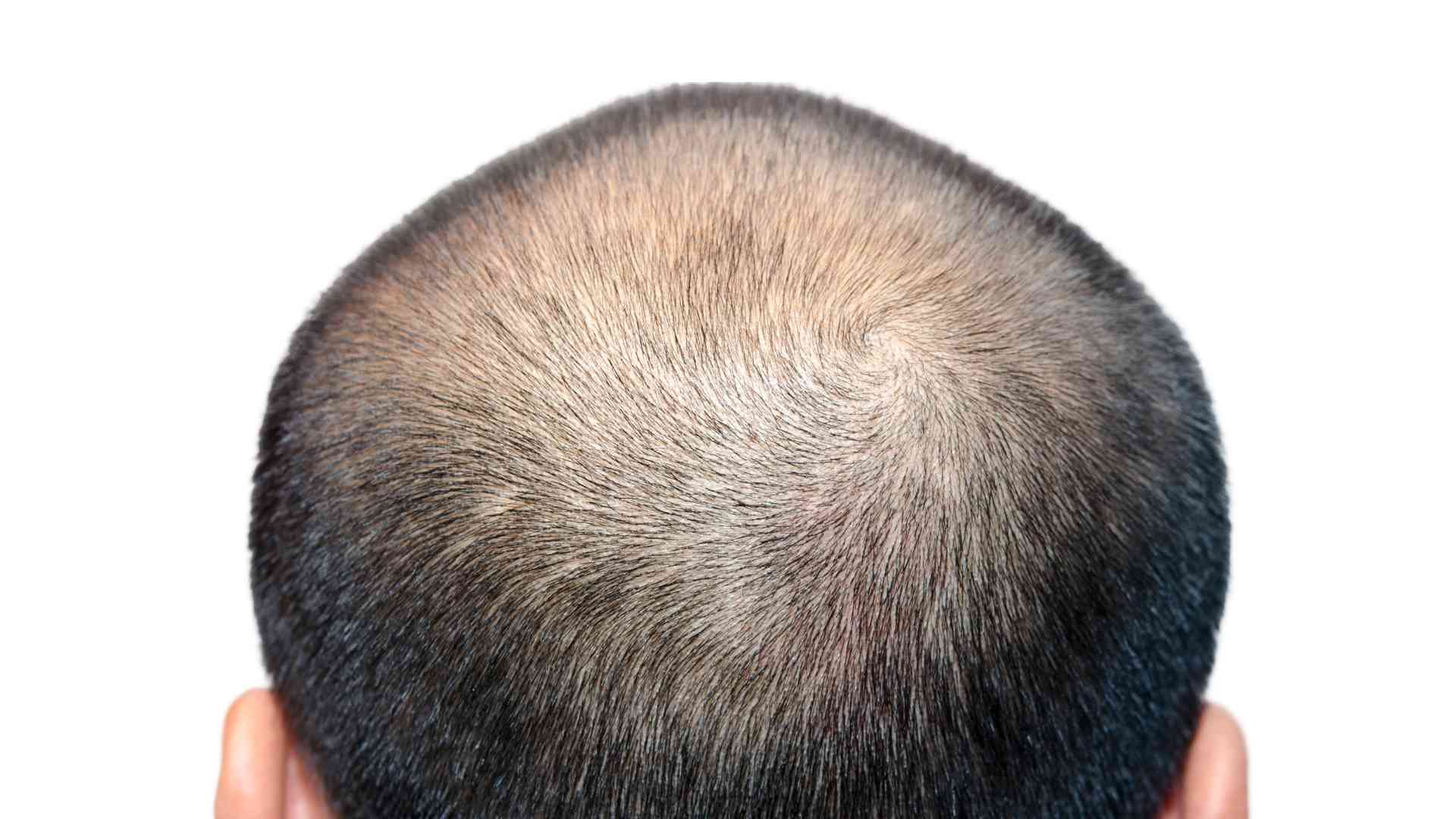Male pattern baldness, a common and widely recognized concern among men globally, is a topic that intertwines genetics and personal identity. The gradual thinning of hair, receding hairlines, and bald patches can evoke a range of emotions and self-perceptions. With a significant impact on self-esteem, appearance, and even social interactions, male pattern baldness prompts individuals to seek solutions that transcend cosmetic concerns.
At the core of this phenomenon lies genetics, playing a pivotal role in determining who experiences this type of hair loss and to what extent. This article delves into the intricate connection between genes and male pattern baldness, shedding light on the underlying mechanisms and inheritance patterns that contribute to this condition. By understanding the genetic factors at play, we aim to unravel the mystery of male pattern baldness and provide insights into potential strategies for prevention and treatment.
The Basics of Male Pattern Baldness
Male pattern baldness, scientifically known as androgenetic alopecia, is a prevalent form of hair loss that affects a substantial portion of the male population. It is characterized by a specific pattern of hair loss that typically begins with a receding hairline and thinning at the crown of the head.
Over time, these areas may expand, leaving a horseshoe-shaped fringe of hair along the sides and back of the scalp. While male pattern baldness does not pose a health risk, its impact on self-esteem and body image can be significant.
Understanding the Genetic Component
Genetics plays a pivotal role in male pattern baldness. The inheritance of certain genes from both parents contributes to an individual’s susceptibility to this type of hair loss. Specifically, variations in genes related to hormone receptors and sensitivity to dihydrotestosterone (DHT), a hormone derived from testosterone, play a crucial role.
DHT’s interaction with hair follicles results in a gradual miniaturization of follicles over time, leading to finer and shorter hair until follicles eventually cease to produce visible hair.
Influence of Family History
Family history often serves as an indicator of male pattern baldness risk. If close relatives, particularly from the maternal and paternal sides, experienced hair loss, the likelihood of developing it increases. Understanding the inheritance patterns helps predict an individual’s predisposition and assists in making informed decisions about potential preventive measures or treatment options.
Male pattern baldness is more than just a cosmetic concern; it’s a complex interplay of genetics and hormones. Recognizing the specific pattern of hair loss and its genetic basis is essential for understanding individual susceptibility. Armed with this knowledge, individuals can explore strategies to manage the condition, whether through medical interventions, lifestyle adjustments, or embracing the changes that come with time.
Genetics and Inheritance: The Basics
Genetics is the study of how traits and characteristics are passed down from one generation to another through DNA. Inheritance is the process by which genetic information is transferred from parents to their offspring. Understanding genetics is key to comprehending how traits, including susceptibility to conditions like male pattern baldness, are inherited.
Genes: The Building Blocks of Traits
Genes are the fundamental units of heredity. They are segments of DNA that contain instructions for building and maintaining the various traits that make each individual unique. These traits encompass everything from physical features to predispositions for certain health conditions.
Dominant and Recessive Genes
Genes come in pairs—one inherited from each parent. Some genes exert more influence over a trait than others. Dominant genes, when present, will express their trait even if only one copy is inherited. Recessive genes, on the other hand, require both copies to be present for the trait to be expressed. If an individual inherits one dominant and one recessive gene for a particular trait, the dominant gene’s influence will prevail.
Understanding these genetic principles provides insight into the inheritance patterns that contribute to various traits, including those related to conditions like male pattern baldness. As we delve deeper into the genetic factors behind male pattern baldness, this foundational knowledge will illuminate the intricate connections between genes and the manifestation of this condition.
The Androgen Receptor Gene (AR) and Its Significance in Male Pattern Baldness

The Androgen Receptor gene (AR) plays a pivotal role in the intricate genetic puzzle of male pattern baldness. This gene encodes the androgen receptor protein, which is crucial for how cells respond to hormones like testosterone and its derivative, dihydrotestosterone (DHT). The AR gene’s influence on hair follicle sensitivity to DHT makes it a key player in determining an individual’s susceptibility to male pattern baldness.
Location on the X Chromosome:
The AR gene is situated on the X chromosome. Inheritance of sex chromosomes differs between males and females. Females have two X chromosomes (XX), while males possess one X and one Y chromosome (XY). Since the AR gene is located on the X chromosome, its inheritance pattern varies based on whether it is inherited from the mother or the father.
Inheritance Pattern and Male Pattern Baldness:
Male pattern baldness is influenced by both maternal and paternal genetic contributions. The inheritance pattern of the AR gene follows a complex interplay of dominant and recessive alleles. A common genetic variation known as a single nucleotide polymorphism (SNP) within the AR gene can result in heightened sensitivity to DHT. Males carrying the variant allele inherited from their mother’s side are more likely to experience hair loss.
The AR gene’s interaction with hormones like DHT triggers a series of events that gradually miniaturize hair follicles, leading to thinner and shorter hair growth. This genetic predisposition, combined with other factors, contributes to the distinctive pattern of male pattern baldness.
Understanding the role of the AR gene and its inheritance pattern enhances our grasp of how genetics intertwine with the development of male pattern baldness. As researchers delve deeper into these genetic intricacies, opportunities for tailored prevention and treatment strategies may emerge.
Complexity of Male Pattern Baldness Inheritance Due to Multiple Genes

Male pattern baldness is a prime example of the intricate nature of genetic inheritance. Unlike conditions determined by a single gene, such as Mendelian disorders, male pattern baldness involves the interaction of multiple genes. This complexity arises from the fact that several genes collectively influence an individual’s susceptibility to hair loss.
Dual Genetic Contributions:
Both paternal and maternal genetic contributions impact the risk of male pattern baldness. Genetic variations from both sides of the family, specifically the mother and the father, converge to create an individual’s genetic predisposition. While the Androgen Receptor gene (AR) on the X chromosome is a prominent contributor, it is not the sole determinant.
Polygenic Inheritance:
Male pattern baldness follows a polygenic inheritance pattern, meaning it’s influenced by the interplay of multiple genes. Each contributing gene may exert a small effect on hair loss susceptibility. The cumulative impact of these genes determines whether an individual experiences male pattern baldness and the extent of its manifestation. This intricate network of genes is responsible for the variation in the age of onset, severity, and pattern of hair loss among individuals.
Understanding this complexity underscores the necessity of comprehensive genetic research to identify the array of genes involved. This ongoing exploration could unlock valuable insights into the mechanisms driving male pattern baldness, potentially paving the way for more personalized and effective treatment approaches in the future.
The Influence of Androgens (Such as Testosterone) on Hair Follicles
Hormones play a crucial role in the development and functioning of the human body, including the hair follicles. Androgens, a class of hormones that includes testosterone, have a significant impact on hair growth. In male pattern baldness, the sensitivity of hair follicles to androgens becomes a key factor.
Androgen Sensitivity and the AR Gene:
The Androgen Receptor gene (AR) holds the instructions for building androgen receptors. These receptors are like locks on the surface of hair follicles, and androgens act as keys. When androgens, especially dihydrotestosterone (DHT), bind to these receptors, it triggers a cascade of biochemical events that influence the hair growth cycle. The sensitivity of these receptors, which is influenced by genetic variations in the AR gene, determines how strongly androgens affect hair follicles.
The Miniaturization Process:
Male pattern baldness is characterized by the gradual miniaturization of hair follicles. This process begins with terminal hair—the thick, healthy hair that covers the scalp. Over time, as the hair follicles become more sensitive to androgens, the growth cycle shortens. Terminal hairs transition into vellus hairs—finer, shorter, and barely visible strands. Eventually, the follicles become inactive, leading to hair thinning and, in some cases, bald patches.
The miniaturization process is like watching a photograph fade gradually. As the hair follicles shrink and produce finer hair, the overall appearance of the scalp changes, often following the recognizable pattern of male pattern baldness.
Understanding how androgens interact with hair follicles and how the AR gene’s activity influences this interaction provides insights into the mechanisms underlying male pattern baldness. This knowledge not only helps us comprehend the condition better but also opens doors to potential strategies for intervention and treatment.
Importance of Recognizing Family History in Understanding One’s Susceptibility
Recognizing genetic predisposition to male pattern baldness begins with understanding your family history. Looking at the hair health of close relatives, particularly parents and grandparents, can provide valuable insights into your own susceptibility to this condition.
Family History and Predisposition:
A family history of male pattern baldness significantly increases the likelihood of inheriting the genetic predisposition. This is because the genes that influence hair loss can be inherited from both the maternal and paternal sides of the family. If you have a parent or grandparent who experienced hair loss, especially at an early age, it serves as a strong indicator that you may also be at risk.
Early Detection and Intervention:
Early detection is paramount when it comes to managing male pattern baldness. If you recognize a family history of hair loss, you can take proactive steps to monitor your own hair health. Regular check-ins with a healthcare professional or dermatologist can help identify signs of hair thinning and determine the best course of action. Early intervention can slow down the progression of hair loss and potentially lead to more successful treatment outcomes.
Understanding your genetic predisposition doesn’t mean resigning yourself to inevitable hair loss. It empowers you to take charge of your hair health by adopting preventive measures, exploring treatment options, and making informed decisions about lifestyle and grooming practices. By being vigilant and proactive, you can address male pattern baldness early and make choices that support your hair’s long-term well-being.
Beyond Genetics: Interaction Between Genetics and Environmental/ Lifestyle Factors

While genetics play a significant role in male pattern baldness, the interaction between genetics and environmental or lifestyle factors adds another layer of complexity to the equation. Environmental and lifestyle factors can modify the expression of genes related to hair loss, either exacerbating or mitigating its effects.
Influence of Stress, Diet, and Smoking:
- Stress: Chronic stress can accelerate hair shedding and exacerbate male pattern baldness. Stress triggers hormonal changes that impact hair follicle health. Managing stress through relaxation techniques, exercise, and self-care can positively affect hair health.
- Diet: Poor nutrition, particularly deficiencies in essential nutrients like vitamins, minerals, and proteins, can compromise hair follicle function. A balanced diet rich in nutrients that support hair growth can contribute to healthier hair.
- Smoking: Smoking restricts blood flow, including to the hair follicles, which can impair their function. Additionally, some compounds in cigarettes may disrupt the hair growth cycle. Quitting smoking can improve overall hair health.
Comprehensive Approach to Hair Health:
Understanding the interplay between genetics, environment, and lifestyle underscores the importance of a holistic approach to hair health. While you can’t change your genetic predisposition, you can modify environmental and lifestyle factors to mitigate the impact of male pattern baldness. By adopting a balanced diet, managing stress, avoiding smoking, and incorporating hair care practices that promote scalp health, you can contribute to the overall well-being of your hair.
In the journey to preserve and enhance your hair health, addressing both genetic and environmental factors empowers you to make informed decisions that support your hair’s vitality. By embracing a comprehensive approach, you’re taking proactive steps to maintain healthy, vibrant hair despite genetic predisposition.
Watch Male pattern baldness genetics | Video
Top 5 FAQs and answers related to How do genetics play a role in male pattern baldness
Is male pattern baldness inherited?
Yes, male pattern baldness has a strong genetic component. It can be inherited from both the maternal and paternal sides of the family. If you have close relatives who experienced hair loss, you are more likely to be genetically predisposed to it.
How do genes influence male pattern baldness?
Genes influence male pattern baldness by determining the sensitivity of hair follicles to hormones like dihydrotestosterone (DHT). Genetic variations in genes like the Androgen Receptor gene (AR) can affect how hair follicles respond to hormonal signals, leading to the gradual miniaturization of hair follicles and eventual hair thinning.
Can I blame only one parent for my male pattern baldness?
No, male pattern baldness is influenced by genes from both parents. The genetic predisposition to hair loss is a result of multiple genes working together, some of which can be inherited from your mother’s side and some from your father’s side.
If my father is bald, does that mean I will be too?
Having a bald father can increase your risk of male pattern baldness, but it’s not a guarantee. Genetic factors are complex and involve a combination of genes from both parents. Your father’s hair loss history is one factor, but other genetic and environmental factors also play a role.
Can I prevent male pattern baldness if I have the genetic predisposition?
While you can’t change your genetic makeup, you can take steps to manage and slow down the progression of male pattern baldness. Adopting a healthy lifestyle, managing stress, avoiding harsh hair treatments, and seeking early intervention can help preserve hair health and delay the onset of hair loss.
Conclusion

In this exploration of male pattern baldness and its genetic underpinnings, we’ve delved into the intricate mechanisms that determine who experiences hair loss and to what extent. Genetics undeniably plays a central role, with the Androgen Receptor gene (AR) standing as a key player in shaping an individual’s susceptibility to this condition. The inheritance patterns, complex interactions between genes, and the role of androgens collectively contribute to the gradual thinning of hair and the recognizable patterns of male pattern baldness.
It’s crucial to recognize that while genetics form a fundamental part of the hair loss puzzle, other factors like environmental influences, lifestyle choices, and even stress also contribute significantly. Taking a holistic approach to hair health entails acknowledging both genetic predisposition and external elements that influence its manifestation.
As you navigate your hair health journey, keep in mind that seeking professional guidance is paramount. Dermatologists and healthcare professionals possess the expertise to tailor solutions based on your unique genetic makeup, lifestyle, and concerns. Understanding your genetic predisposition empowers you to make informed choices, take proactive steps to manage hair loss, and explore potential treatments.
Remember, hair loss doesn’t define you, and there are solutions available to help you maintain a healthy and confident appearance. By embracing a comprehensive approach and seeking expert advice, you’re well-equipped to navigate the intricate interplay between genetics and male pattern baldness with confidence.
Please share this How Do Genetics Play a Role in Male Pattern Baldness? with your friends and do a comment below about your feedback.
We will meet you on next article.
Until you can read,7 Common Misconceptions About Hair Loss Debunked
